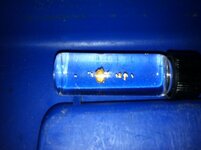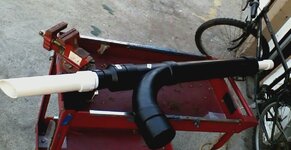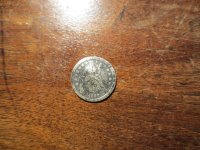Sjohnsone
Greenie
Morning/afternoon all,
I live near L.A. and have gone up to the San Gabriel river a few times. I brought with me a shovel, trowel, 2 buckets, 2 classifiers, a pan and a folding sluice.
The first time was pretty much a wash because I was too excited and just started randomly digging (found a few specks).
The second time I went I actually tried using my noodle and looking for where gold could get trapped and dug in the dry gravel.
The third time I tried using my noodle again and was digging in the water behind rocks, etc (most of which seemed cleaned out).
Each time I find lots of black sand but at the very best I find like 1 to two miniscule specs of gold that are so tiny I can barely suck them up with my suction bottle.
The riffles in my sluice seem to build up with gravel really fast and it won't wash out. Yesterday I spent probably an hour trying to set it up in an ideal spot with an ideal speed, but it just wouldn't.
Can someone point me in just even a general direction? Is the area just that picked over? It's like a 1.5 hour ride each way for me every time on my motorcycle and I'm just feeling a bit like a failure and it's starting to get frustrating. The last time I showed up I just looked in the river and said to myself: "Well...****. You just have no idea what you're doing."
I tried asking some of the guys there - and I get it, no one wants to tell you where there is a bunch of gold, but at the same time - it's really hard to learn all of this on your own.
I live near L.A. and have gone up to the San Gabriel river a few times. I brought with me a shovel, trowel, 2 buckets, 2 classifiers, a pan and a folding sluice.
The first time was pretty much a wash because I was too excited and just started randomly digging (found a few specks).
The second time I went I actually tried using my noodle and looking for where gold could get trapped and dug in the dry gravel.
The third time I tried using my noodle again and was digging in the water behind rocks, etc (most of which seemed cleaned out).
Each time I find lots of black sand but at the very best I find like 1 to two miniscule specs of gold that are so tiny I can barely suck them up with my suction bottle.
The riffles in my sluice seem to build up with gravel really fast and it won't wash out. Yesterday I spent probably an hour trying to set it up in an ideal spot with an ideal speed, but it just wouldn't.
Can someone point me in just even a general direction? Is the area just that picked over? It's like a 1.5 hour ride each way for me every time on my motorcycle and I'm just feeling a bit like a failure and it's starting to get frustrating. The last time I showed up I just looked in the river and said to myself: "Well...****. You just have no idea what you're doing."
I tried asking some of the guys there - and I get it, no one wants to tell you where there is a bunch of gold, but at the same time - it's really hard to learn all of this on your own.
Amazon Forum Fav 👍
Upvote
0







